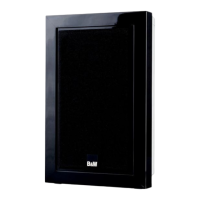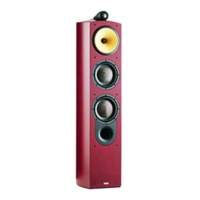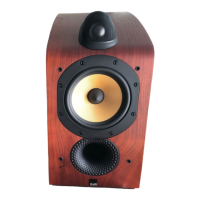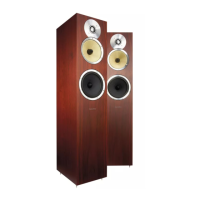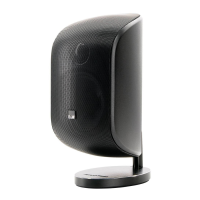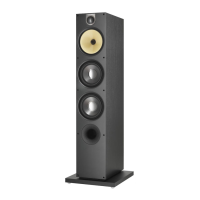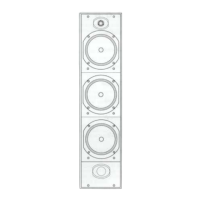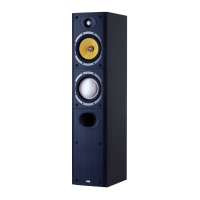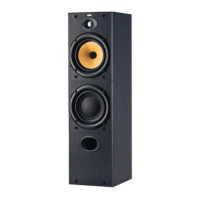Before fine tuning the installation, double
check the polarity and security of the
connections.
If the hand-tightened nut that holds
Nautilus to the plinth is not done up
sufficiently tightly it can occasionally work
loose. This may create a difficult-to-locate
rattle or buzz. The accessory pack includes
a rubber washer and a steel washer that
should be employed between the plinth and
nut to eliminate this problem. The rubber
washer should rest against the plinth.
If it is not possible to position the crate
near the plinth when unpacking, the pieces
of foam covering Nautilus in the crate can
be used to support the loudspeaker close
to the plinth within reach of the loud-
speaker harness.
If you need to alter the tilt of the
Nautilus, French chalk is supplied in the
accessory pack to ease movement between
the speaker and its plinth.
If the level of bass is uneven with
frequency, this is usually due to strong
excitation of resonance modes in the
room. Even small changes in the position
of the speakers within the listening room
can have a profound effect on the perceived
sound quality by altering the excitation of
these modes. Try mounting the speakers
along a different wall. Even moving large
pieces of furniture about can have an effect.
If the general level of bass is too high,
try moving the speakers further away from
the walls. Conversely, if you need more
bass, move the speakers closer to the
walls. Space behind the speakers also
improves the impression of perspective
on well recorded material.
If the sound is too harsh, increase the
amount of soft furnishing in the room. For
example, use heavier curtains. Conversely
reduce the amount of soft furnishing if the
sound is dull and lifeless.
Test for flutter echoes by clapping your
hands and listening for rapid repetitions.
These can smear the sound, but may be
reduced by irregular shaped surfaces such
as bookshelves and large pieces of furniture.
As Nautilus is designed in such a way
that the units are de-coupled from the enclo-
sure and the base weighs a substantial
50kg, provision for spikes is unnecessary
and therefore not included.
Fine tuning
The GRP cabinets normally only require
dusting. If you wish to use an aerosol cleaner,
spray onto the cleaning cloth, not directly
onto the cabinet.
If the surface of the speaker suffers
any minor scratches they can be polished
out with fine T-Cut or finishing compound
such as “Finesse It” by 3M.
When making or breaking connections,
ensure all power is switched off otherwise
damage may result.
Avoid touching the drive units, espe-
cially the domes, as damage may result.
Aftercare
Specification
(-6dB):10Hz – 25kHz
±0.5dB
10Hz – 220Hz: 305mm
220Hz – 880Hz: 100mm
880Hz – 3.5kHz: 50mm
3.5kHz – 25kHz: 25mm
4 (one per unit) of 30v rms
(100 watts into 6 ohms)
1050mm (H) x 900mm (D) x 420mm (W)
60kg
50kg
Midnight blue, Black and Silver
Bandwidth
Deviation from flat Response (25Hz – 20kHz)
Drive units
Amplifier requirements
Minimum for full satisfaction
Overall dimensions
Loudspeaker weight
Plinth weight
Standard finishes
Matrix is a registered trademark of B&W Loudspeakers Ltd.
Kevlar is a registered trademark of Dupont.
B&W Loudspeakers Ltd reserves the right to amend details of the
specification without notice in line with technical developments.
Copyright © B&W Loudspeakers Ltd.
Design Thomas Manss & Company, London 5/97

